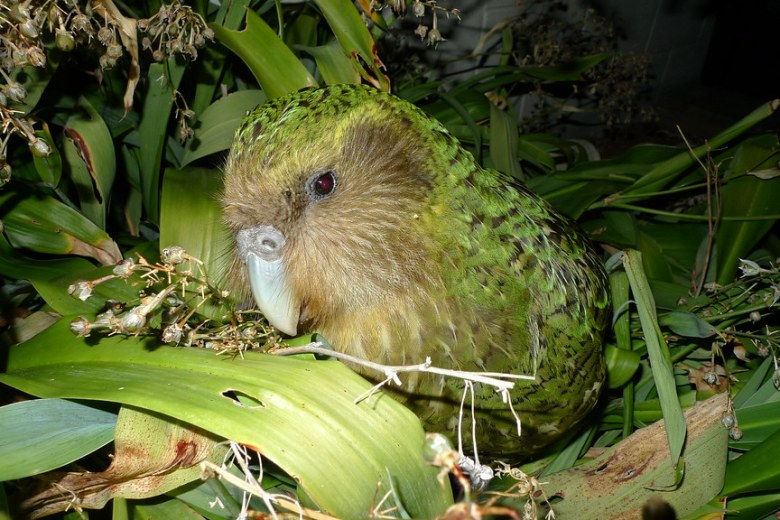
New Zealand’s conservation department is hopeful of saving one of the country’s most precious birds from the brink of extinction with the help of a unique database of ‘digital twins’.

The kakapo, a moss-green flightless parrot with a lifespan of 95 years, is one of New Zealand’s most treasured bird species.
The distinct parrot is critically endangered as a result of the introduction of predators like possums and stoats during colonisation.
The population is so imperiled that most of the birds have been relocated to two predator-free islands in the South of New Zealand, Codfish and Anchor island.
But an online database powered by Amazon Web Services has helped boost numbers from 137 to 200 birds within a year.
Determined to save the unique bird, the Department of Conservation in 2018 developed a data portal which creates a digital twin of every single one of the birds.
After fitting each bird with a transmitter, the team used AI to analyse the bird’s unique call and help them build profiles of the bird’s location and population.
The system helps conservationists understand the activity of the bird, enabling them to more effectively roll out targeted initiatives to help keep the population alive.
Experts also created a digital portal to measure the number of existing predator traps to forecast the future number of traps needed. In one reserve, the team learnt that more than 1,800 traps would be needed to keep predators at bay.
The data was also modelled by the department to help authorities understand the cost of protective efforts going forward.
Using AI to make investment decisions
NZ Department of Conservation CIO Mike Edginton told the Amazon Web Services Public Sector Summit this month that the data has been essential in helping turn the population around and making more informed decisions about the use of resources.
“That information was gold… When we scaled it out we found the value or cost of putting stoat traps across the landscape would be $3 billion and maintenance was going to be $1 billion – that’s an extraordinary amount of money given we’re an agency with half billion budget each year.”
“The more we can use AI more we can make well-informed investment decisions.”
The department’s work doesn’t end here, according to Mr Edginton, who has plans to open up and scale the data both nationally and globally and even using AI to enable the team to monitor the bird 24/7.
“The future looks like a data lake, open source data and sharing that data so many people can use it to improve conservation,” he said.
Comment below to have your say on this story.
If you have a news story or tip-off, get in touch at editorial@governmentnews.com.au.
Sign up to the Government News newsletter